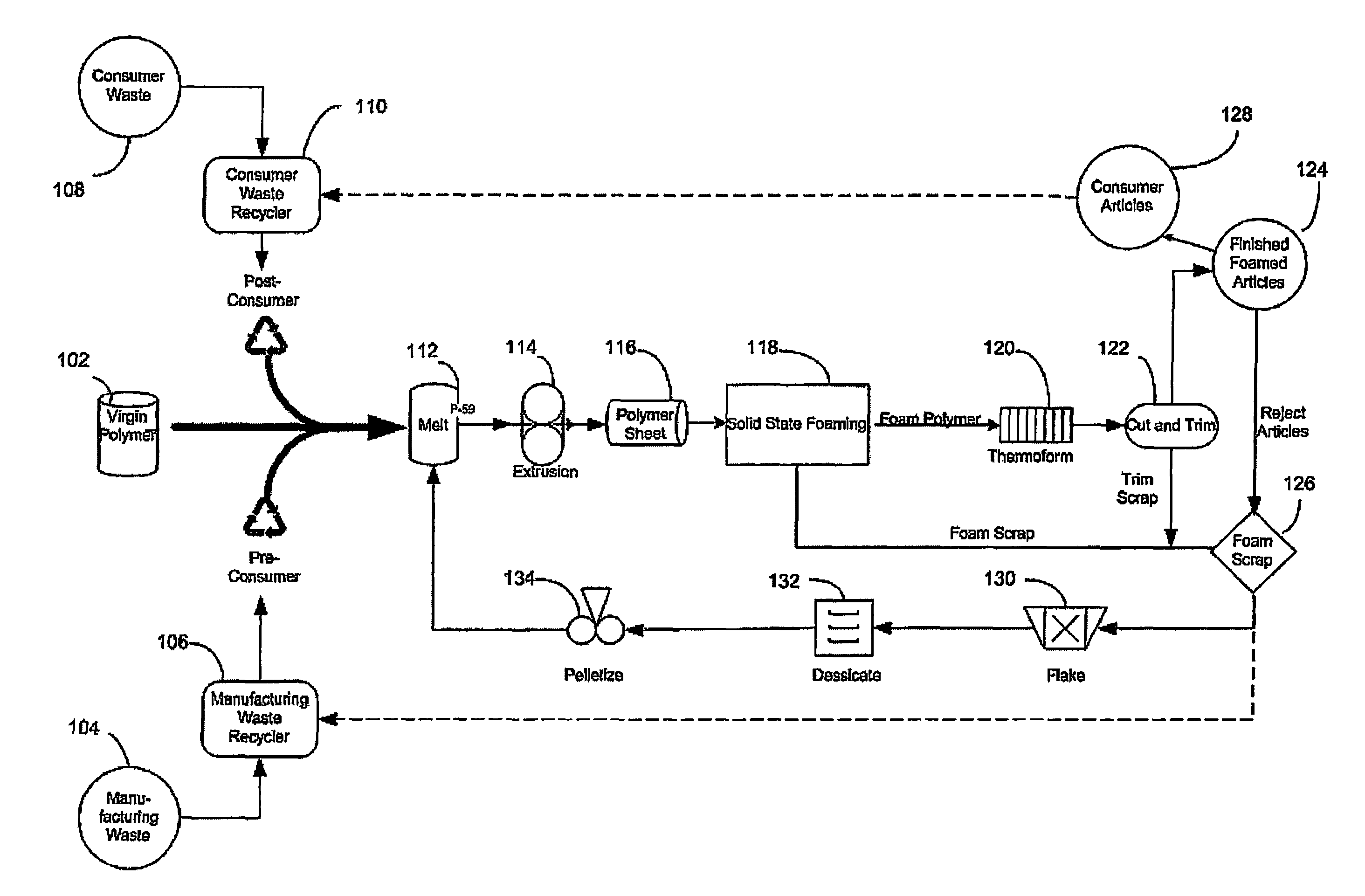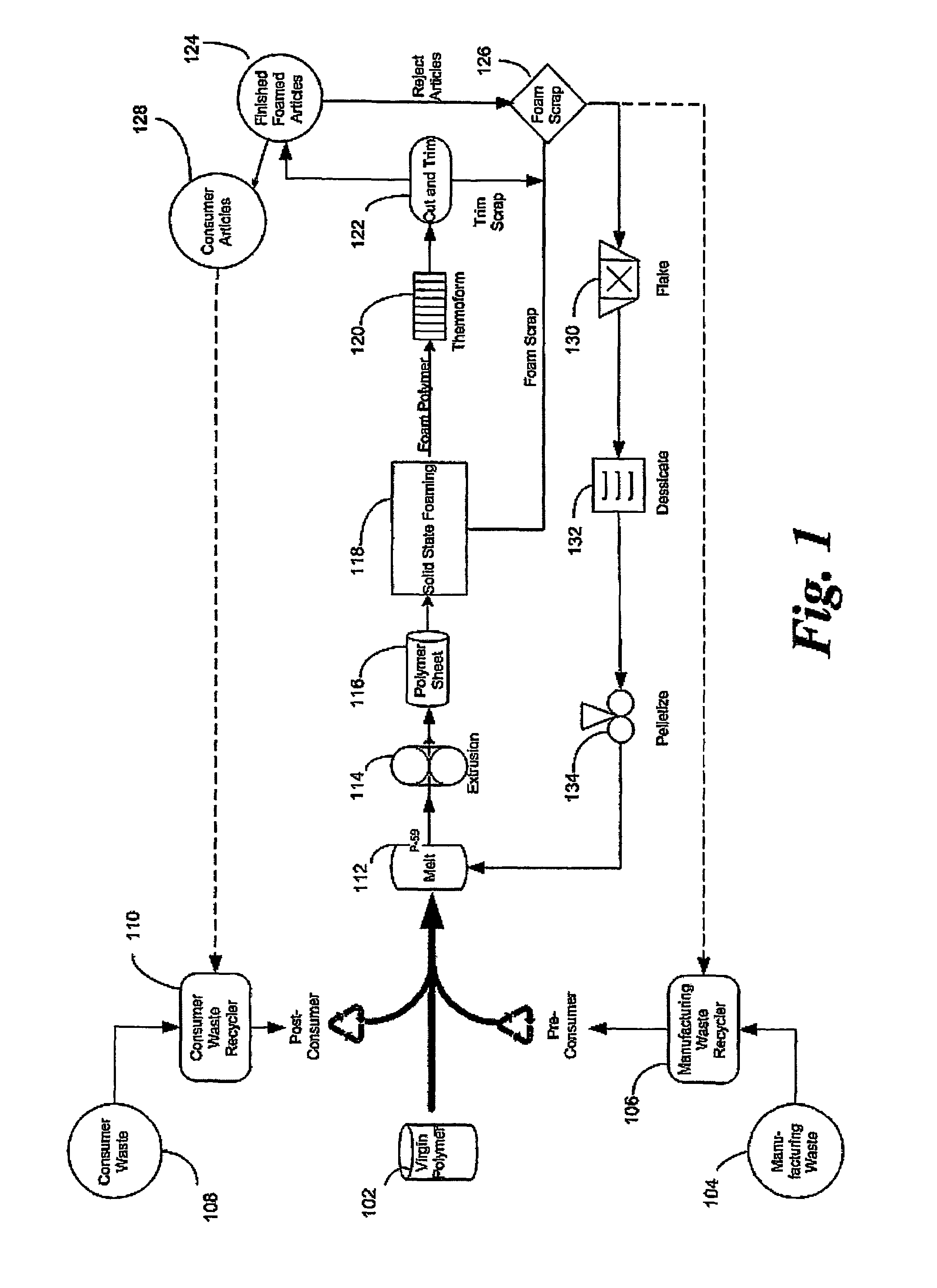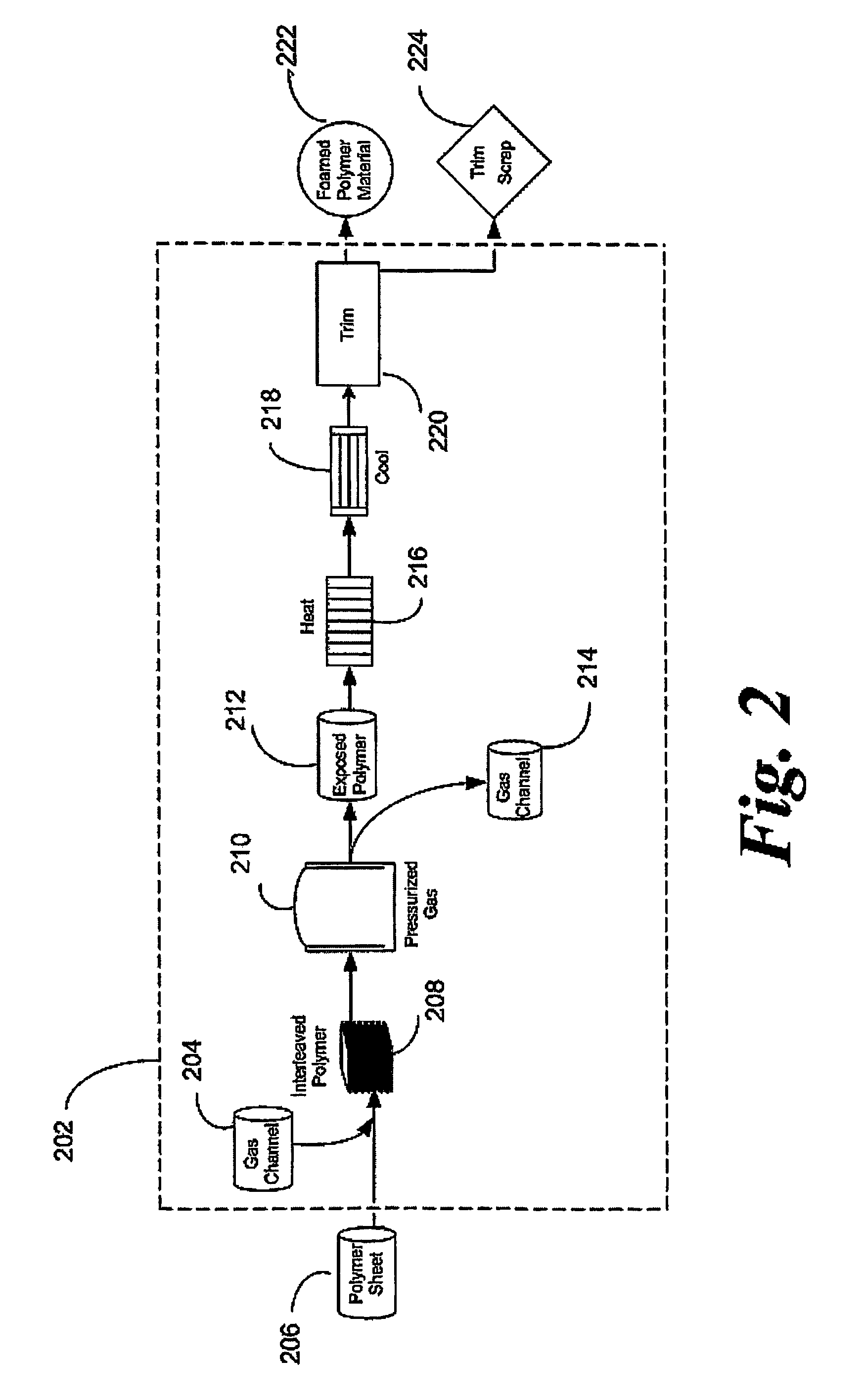Manufacture of fully recyclable foamed polymer from recycled material
a fully recyclable, foamed polymer technology, applied in the field of polymer foam manufacturing, can solve the problems of high environmental cost, inconvenient manufacturing process, large amount of plastics in landfills, etc., and achieve the effects of increasing crystallinity, high service or operating temperature, and increasing crystallinity
- Summary
- Abstract
- Description
- Claims
- Application Information
AI Technical Summary
Benefits of technology
Problems solved by technology
Method used
Image
Examples
example 1
[0070]A sample was placed in a vessel pressurized to 6.2 MPa with carbon dioxide where it was held at 15.5 deg. C. for 24 hours and thirty minutes. The sample was then decompressed and allowed to desorb impregnated gas at atmospheric pressure at −13.9 deg. C. for 32 minutes, after which it was warmed to 20 deg. C. in a water bath. Foaming was observed. The density of the resulting foamed polymer relative to solid polymer was measured at 70.0 percent.
example 2
[0071]A sample was treated precisely as the sample in EXAMPLE 1 above, with the exception that the sample was allowed to desorb impregnated gas for 651 minutes prior to warming and foaming. The density of the resulting foamed polymer relative to solid polymer was measured at 79.9 percent. The surface of the sample foamed in this trial was noticeably smoother and glossier than the surface of the sample foamed in Example 1.
example 3
[0072]A sample was placed in a vessel initially pressurized to 3.45 MPa with carbon dioxide where it was held at −21 to −24 deg. C. as carbon dioxide gas pressure was increased to 5.52 MPa over a period of 27 hours and 56 minutes. The sample was then decompressed and allowed to desorb impregnated gas at atmospheric pressure at 21.1 deg. C. for 120 minutes, after which it was warmed in a heated bath to 76.7 deg. C. Foaming was observed. On cooling to room temperature, the density of the resulting foamed polymer relative to solid polymer was measured at 27.1 percent.
PUM
| Property | Measurement | Unit |
|---|---|---|
| wall angle | aaaaa | aaaaa |
| pressure | aaaaa | aaaaa |
| diameters | aaaaa | aaaaa |
Abstract
Description
Claims
Application Information
 Login to View More
Login to View More - R&D
- Intellectual Property
- Life Sciences
- Materials
- Tech Scout
- Unparalleled Data Quality
- Higher Quality Content
- 60% Fewer Hallucinations
Browse by: Latest US Patents, China's latest patents, Technical Efficacy Thesaurus, Application Domain, Technology Topic, Popular Technical Reports.
© 2025 PatSnap. All rights reserved.Legal|Privacy policy|Modern Slavery Act Transparency Statement|Sitemap|About US| Contact US: help@patsnap.com



